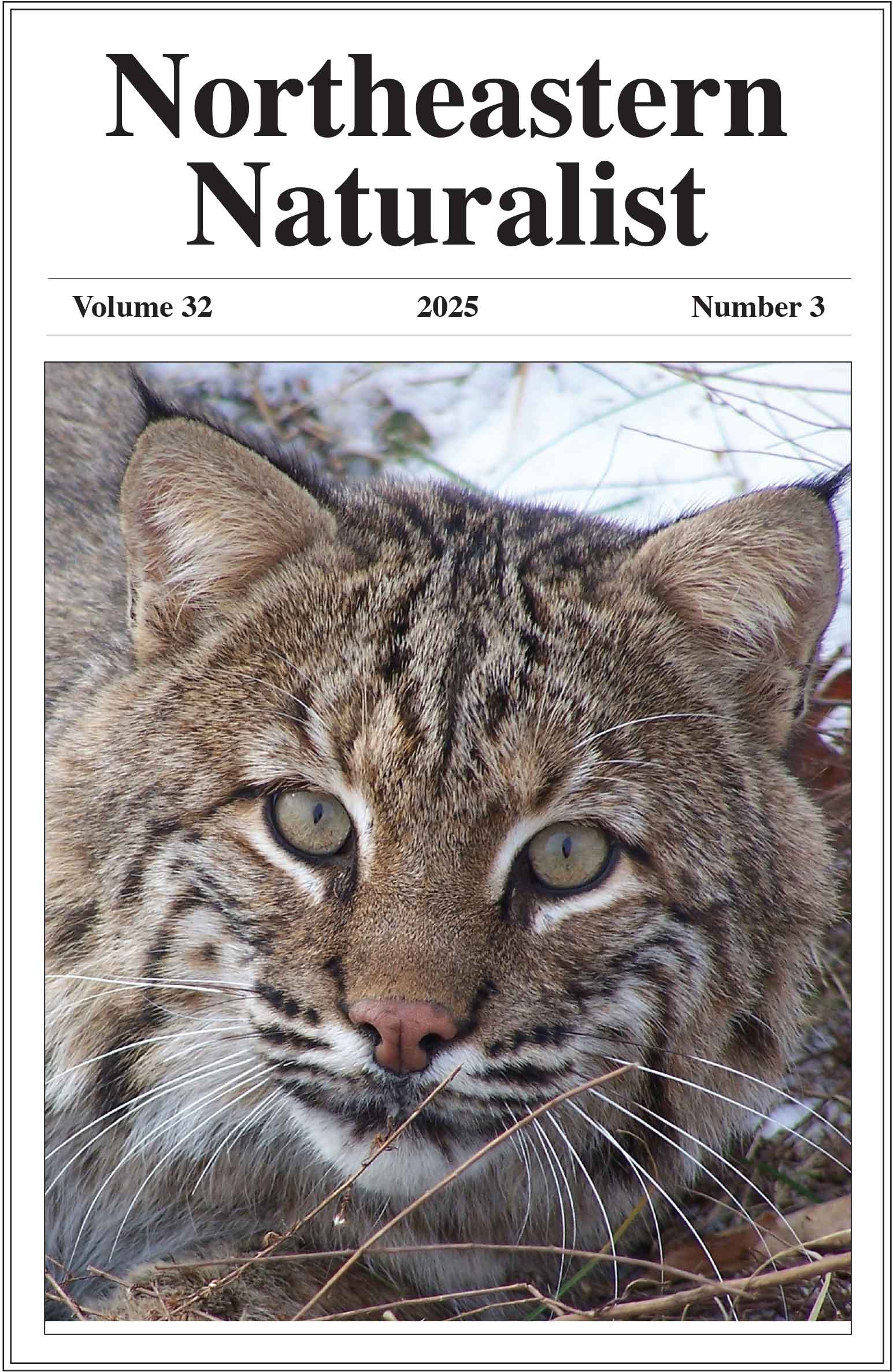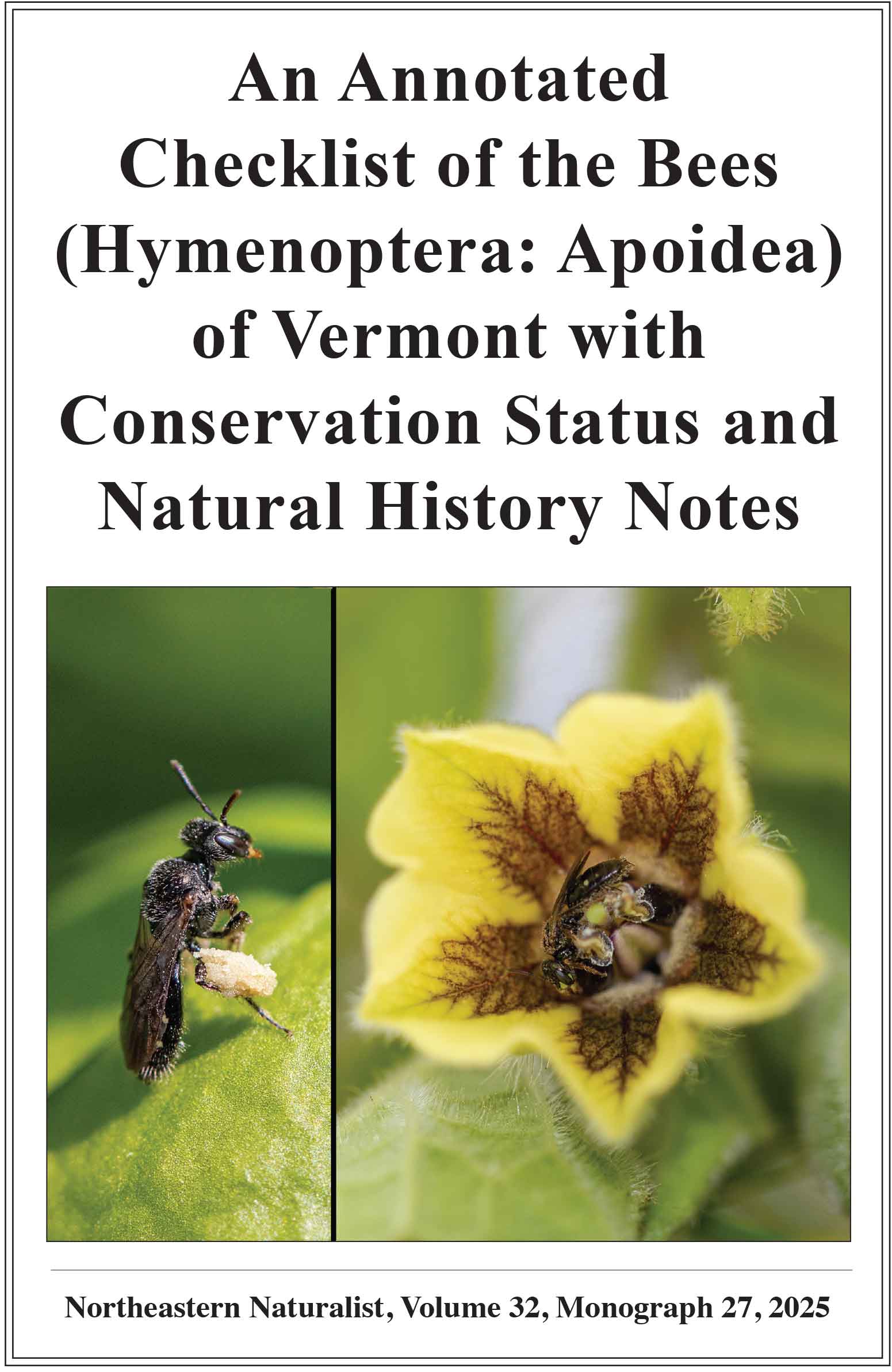The History and Distribution of Brown Trout, Salmo trutta Linnaeus, 1758, in Nova Scotia, New Brunswick, and Prince Edward Island
Samuel N. Andrews1,2,*, Keeler J. Colton2, Elizabeth M.T. Bateman2, John L. MacMillan3, Colin F. Buhariwalla3, Kathryn Collet4, Abbey Greer4, Rosanne McFarlane5, and Michael. J.W. Stokesbury2
1Ducks Unlimited Canada, 64 Highway 6, Amherst, NS B4H 3Y4, Canada.2Nova Scotia Museum, 1747 Summer Street, Halifax, NS B3H 3A6, Canada. 3Nova Scotia Department of Fisheries and Aquaculture: Inland Fisheries Division, 91 Beeches Road, Pictou, NS B0K 1H0, Canada. 4New Brunswick Department of Natural Resources and Energy Development, Hugh John Flemming Forestry Complex, 1350 Regent Street, Fredericton, NB E3C 2G6, Canada. 5Prince Edward Island Department of Environment, Energy and Climate Action. Forests, Fish and Wildlife Division, 183 Upton Road, PO Box 2000, Charlottetown PE C1A 7N8, Canada. *Corresponding author.
Northeastern Naturalist, Volume 32, Monograph 26 (2025): 1–90
First published early online: 11 March 2025
Abstract
Salmo trutta (Brown Trout) were introduced to New Brunswick in 1921 and Nova Scotia in 1925, where they have become widely distributed throughout coastal tributaries and inland lakes. Brown Trout occupy freshwater across their native and introduced range. However, they tend towards anadromy anywhere they have access to the sea, making them an effective colonizer of coastal rivers and estuaries. The Canadian Maritime Provinces provided the necessary conditions for natural colonization, and through this mechanism, Brown Trout have found their way to unstocked waters, including in Prince Edward Island, where the species was never intentionally introduced. Brown Trout are a popular recreational species in the Maritime Provinces, but no synthesis of the species’ distribution has been conducted in the region. Here we report on the complete Brown Trout stocking history, introduced distribution, natural colonization, and management in the Maritime Provinces. The goal of this review is to provide the baseline data necessary to inform local scientific studies of Brown Trout, monitor the ongoing colonization of coastal habitat, and to assist in studying, managing, and documenting the occurrence of Brown Trout alongside native freshwater species.
![]() Download Full-text pdf (Accessible only to subscribers. To subscribe click here.)
Download Full-text pdf (Accessible only to subscribers. To subscribe click here.)
Access Journal Content
Open access browsing of table of contents and abstract pages. Full text pdfs available for download for subscribers.
Issue-in-Progress: Vol. 32(4) ... early view
Check out NENA's latest monograph and Special Issue:













 The Northeastern Naturalist is a peer-reviewed journal that covers all aspects of natural history within northeastern North America. We welcome research articles, summary review papers, and observational notes.
The Northeastern Naturalist is a peer-reviewed journal that covers all aspects of natural history within northeastern North America. We welcome research articles, summary review papers, and observational notes.